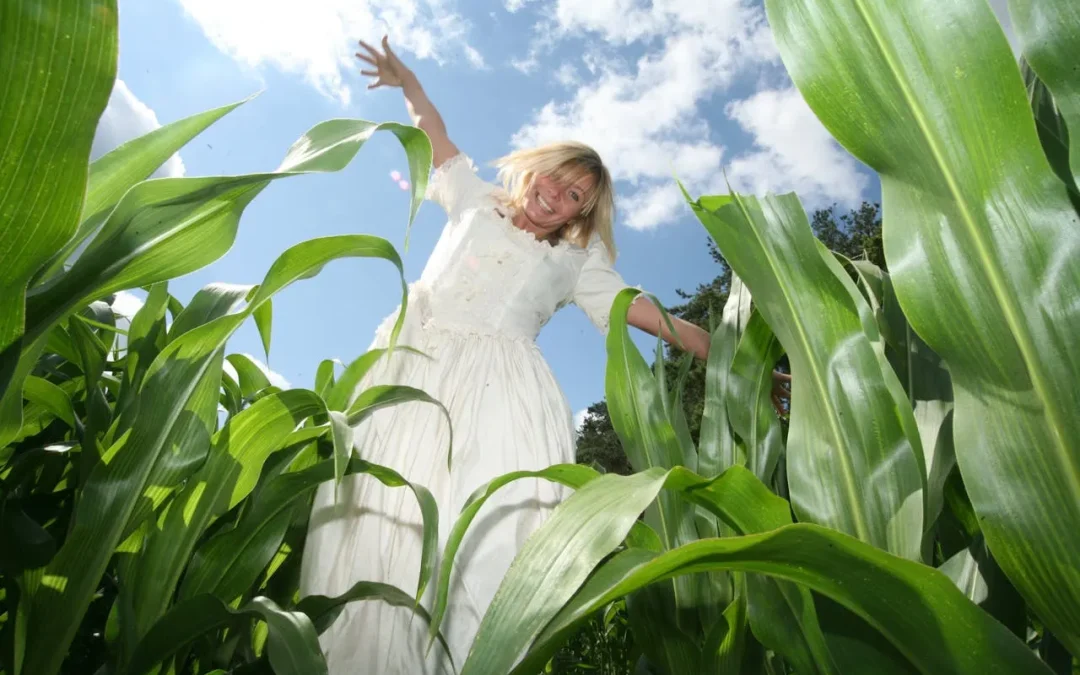Indulging your senses in nature not only awakens your awareness, but can increase your joy.
Of all the seasons, in my opinion, summer is the one that most deserves the title, “season of succulence.”
The word that means juicy, moist, lush, and ripe, simply belongs to this time of year when vines hang heavy with green and purple grapes, baskets of plump peaches lure us to roadside stands, and the corn stalks are hanging heavy with golden ears.
Succulence, to me, begs to be savored like the raspberries that grow wild in the woods where I walk, their sweet/tart juice staining my lips. Succulence is also the rolling hills of grassy meadows calling me to stop, lie down, and breathe. Watch the clouds. Feel the sun on my face. Succulence demands that we stop and gather it in.
Nature is full to bursting in the succulent season with colors, smells, and sounds that can, if we’re willing to savor it with all our senses, gift us with the most precious of fruits: joy.
To put it simply: savoring nature enriches us — body, mind, and soul.
The Science Behind Savoring and Joy
Why can savoring nature make us feel better? According to Dr. Laurie Santos, Yale University psychology and cognitive science professor, it’s because we’re paying attention. In a course she teaches called “The Science of Well-being,”* Santos defines savoring as “the act of stepping out of your experience to review it and really appreciate it while its happening.”
Sounds a bit like meditation, right? Savoring is exactly a way of stilling the mind and being in the moment. Joyfulness, Santos suggests, comes from being deeply absorbed in experiences and giving them attention, allowing curiosity to draw us deeper into the feelings that arise. We clear away the mind-clutter and discover what it feels like to be in our body in the moment. We ignite awareness.
In nature, we’re offered an endless banquet of sensory-stimulating delights, especially in the summer when the land bursts with fruits, flowers, corn fields, and grassy meadows. We’re barraged with succulence that calls us to observe, smell, touch, and taste, not just with a cursory nod, but with complete absorption. Drench yourself, nature commands!
Savoring as self-care
Savoring is an act of intention. When we treat savoring as self-care, we open the door to calming the mind and receiving insights, revelations, and creative inspiration that can be blocked from too much life distraction.
Encountering nature through your senses allows you to savor your experience and can bring instant calm. Here are a few simple steps for deepening your attention:
Walk Mindfully. Remove the earbuds; cut off the noise. Wander with slowness, with your senses attuned. Allow yourself to be present without watching the clock. Linger in your surroundings in readiness.
Zoom In; Zoom Out. This is an exercise in intensified observation. Zoom in to see the small details: colors, textures, shapes. Zoom out to take in the landscape around you. What draws your attention?
Touch, Listen, Smell. Focus on every sense. Touch the leaves, the corn silk, the damp earth, the daisy petals. Close your eyes and breathe in the air. Can you recognize summer by its smells?
Savor the moment. Allow your body to relax. Focus on your feelings instead of your thoughts. Are you calm, peaceful, less tense? Notice the emotions that arise as nature’s succulence washes over you. Do you feel awe, wonder, pleasure, satisfaction? Stay in the moment and enjoy it.
Savoring the lush ripeness of nature in its’ fullness of colors, fragrances, and flavors is balm for the spirit. The joy comes when you pay attention to your body’s experience of stillness, every sense heightened. Go, and bite into that juicy watermelon; that buttered ear of sweet corn. The succulent season too quickly fades into fall; savor it now.
Want to go deeper into a practice for savoring the moment? Download my FREE 16-pageBook, CENTERING IN NATURE.
*Watch Dr. Laurie Santos’ video series on The Science of Well-being.

